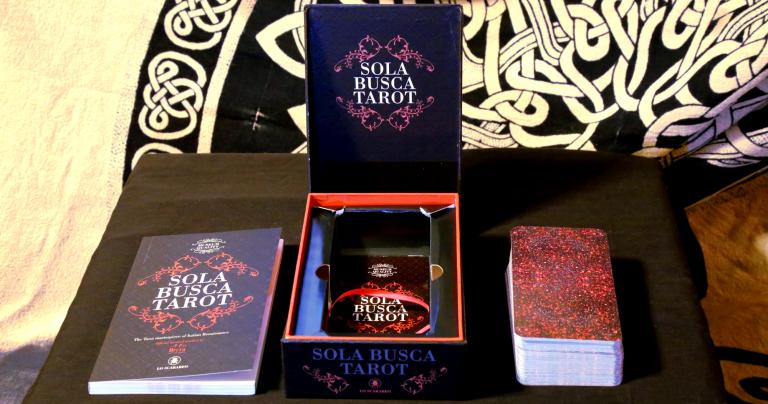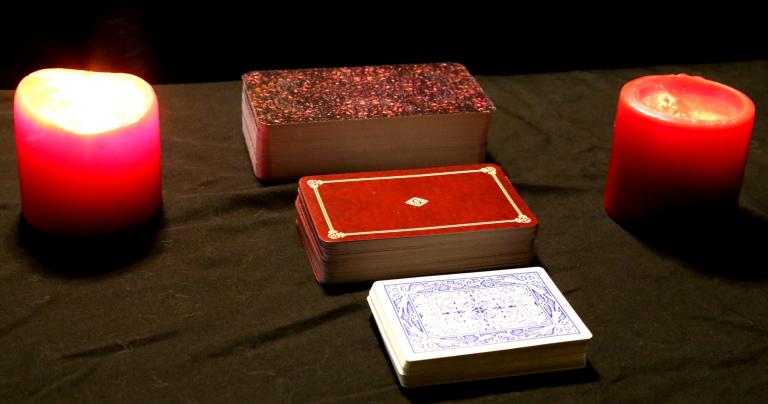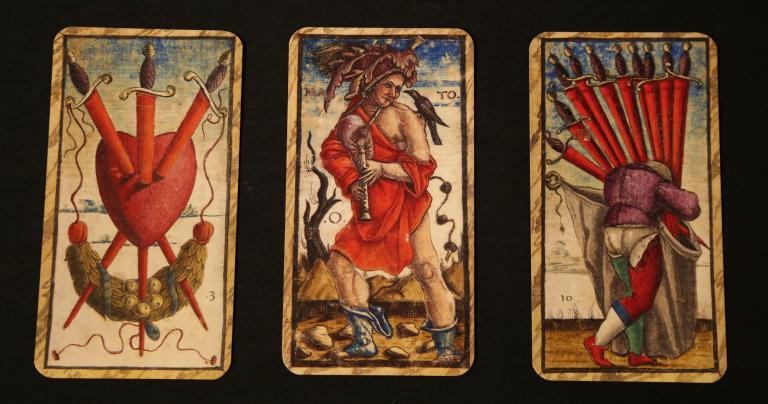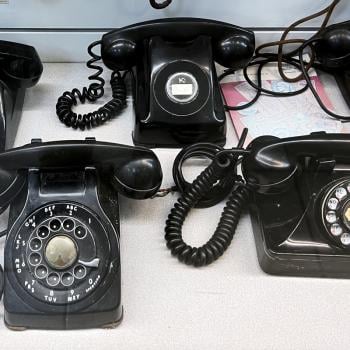Tarot is my go-to divination system. I’ve been fascinated by it ever since first saw the cards in a horror movie as a small child. How I learned to read Tarot (finally!) is its own story, one I told in 2017.
I don’t have a lot of decks. I bought the Robin Wood Tarot in the first months of my Pagan journey and I never felt the need for a different deck. I have a Waite-Smith deck for people who want readings with “the original cards” (a phrase I’ve used before, despite the fact that it’s wrong by over 400 years). Two years ago I got Kristoffer Hughes’ Celtic Tarot and I love it. But that’s about it.
I know readers who have over a hundred decks. I don’t see the point. Many decks have beautiful artwork, but if you’ve got a deck that speaks to you, why do you need ten more? A couple years ago I bought a slightly used Thoth deck because of the connection to Aleister Crowley and because I love art deco, but I can only remember reading with it once.
But when I saw there was going to be a new edition of the very old Sola Busca Tarot, I wanted one. And so I got one.
The Presentation
The Sola Busca Tarot is published by Lo Scarabeo in Italy and sold in partnership with Llewellyn Worldwide. It comes in an attractive top-hinge box that holds the cards and the guidebook, which tells some of the history of the Sola Busca and provides descriptions of the trump cards. The book isn’t as long as it looks – it has English, Italian, French, Spanish, Portuguese, and Russian text in the same volume.
The cards are big. The picture below shows the Sola Busca, the Celtic Tarot (which is printed in the usual size for Tarot cards) and a deck of playing cards. The cardstock is heavy and stiff. Between the size and the stiffness, I can’t shuffle them with an ordinary riffle shuffle. The best way to shuffle this deck is to spread them out on a table and mix them up.
On the plus side, they should hold up very well even in heavy use. This isn’t a deck you’re likely to wear out.
It’s expensive as Tarot decks go: $45.95 from Llewellyn or (currently) $42.45 from Amazon. You pay more, but you get more.
The origins of the Sola Busca
It has long been assumed that the Sola Busca Tarot was created in 1491. Card 14 of the trumps (it doesn’t seem appropriate to call them the Major Arcana – early Tarot decks were meant for playing games, not for divination or fortune telling) is marked MLXX – 1070. That would be a thousand and seventy years from the founding of Venice in 421 CE, or 1491. The book that accompanies this deck (written by Andrea Vitali) provides evidence that the final design didn’t happen until a hundred years later.
Let’s just say that as Tarot decks go, the Sola Busca is very old – among the oldest. It is the oldest deck for which we have the full set of 78 cards.
It’s also the oldest and one of the very few decks prior to the Waite-Smith (first published in 1909) that has pictures on the suit cards. Almost all of the older decks had artwork on the trump cards, but only the appropriate number of swords, batons, cups, or coins on the others – similar to contemporary playing cards.
Images and meanings – both familiar and not
Some of the cards are familiar. Sola Busca’s 3 of Swords has been copied in countless decks. Trump 0 – The Fool – is clearly the fool we’re used to seeing, minus the dog and the cliff. The 10 of Swords is almost identical to the Waite-Smith 10 of Wands.
But the trumps – what would become the Major Arcana – are mostly different. Very different. They’re figures from history and legend. The only name I recognized was the Babylonian king Nebuchadnezzar. Some are figures from Italian history that would have been recognized by 16th century Venetians, while others are obscure and some are of uncertain origin.
They do not fit neatly into the “fool’s journey” progression of the Waite-Smith deck and attempts to force them into it strike me as counterproductive. Like so much of Pagan and quasi-Pagan culture, the Sola Busca needs to be appreciated for what it is, not what we think is should be.
In The Game of Saturn (published by Scarlet Imprint) Peter Mark Adams explores the symbolism in the Sola Busca and comes to the conclusion it was an attempt to subtly support a Pagan revival among the elite in the 15th century – and a rather dark revival at that. Adams discussed his book and the Sola Busca with host Gordon White in a Rune Soup podcast in 2017.
I haven’t read The Game of Saturn and therefore cannot comment on it. However, even a casual glance at the Sola Busca shows that it’s missing the overt Christian imagery present in most Tarot decks (including the Waite-Smith). There may very well be more here than cards for a game that were repurposed for fortune telling centuries later.
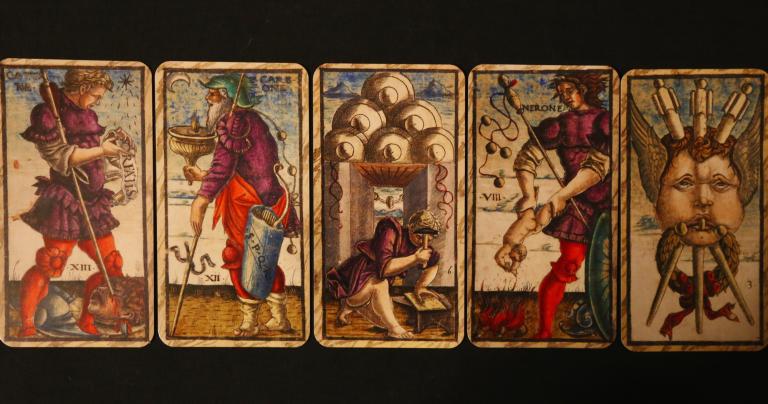
Reading with the Sola Busca
I consider myself a good reader, but I’m no Camelia Elias. I’m not going to try to teach you how to read Tarot. But I can tell you how I read for myself and for others.
I see two ways to read with the Sola Busca.
The first is to do some deep research into the origin of these cards and the artwork on them. Learn who all the characters of the trumps are and why a 15th or 16th century Venetian would have considered them important enough to depict on the cards. Learn the history of the period: its culture and politics. Come to your own conclusion as to what the artist intended to say with these pictures. Use what you learn to provide context. Then your question plus historical context plus card position plus intuition and/or guidance from spirits yields an answer.
The second approach is to simply let the cards speak to you. Contemplate the question, draw the cards, and look at the images. What do they say to you? What stands out? How does each card relate to the other cards? What common themes do you see? Don’t overthink it – your first impression is probably the best.
In either case, throw out everything you know or think you know about “standard” Tarot meanings. They simply don’t fit with this deck.
Early results
I picked up the Celtic Tarot and got amazingly clear readings from it right away. The Sola Busca challenges me – it’s so different from anything I’ve used before. My early readings have been accurate but fairly shallow, as if there’s something I’m missing. Which I probably am. There’s something here, something deeper, something important… but finding it is going to require work.
I’m going to work on it for a while and see what happens.
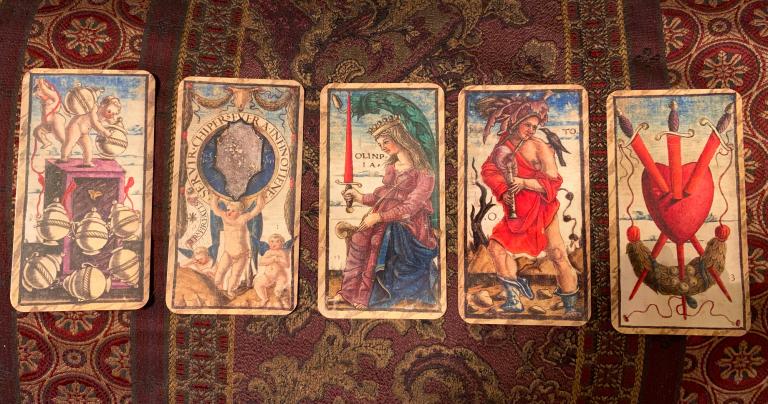
For those who care about such things, Llewellyn sent me a review copy of the Sola Busca Tarot. But my only obligations to Llewellyn are as an author (they publish my books). As a blogger and a reviewer, my obligation is to you, the reader. This is my honest evaluation of this deck.


